Many professional associations are reaching a crossroads: they’re attempting to keep pace with generational workplace shifts, increasing globalization of both people and organizations, and fast-paced technological advancements. How can associations keep up with these changes while continuing to provide the most value to their members? If you ask us, professional development, education, and certification is a natural first step.
However, the process of creating a new certification program or revamping a stalled one can seem overwhelming and time-consuming. Never fear—we’ve compiled a few key tips to keep in mind as you approach your certification strategy. Perhaps you already have a body of knowledge (BOK) that you’d like to test against, or if not, check out our “How-To” section this month for an overview of how to create one from the ground up. Regardless, once you’ve taken the crucial first step of forming your foundation of knowledge, then comes the fun part: bringing that body of knowledge to life in a way that helps your members learn in the most proficient and efficient manner possible.
Tip #1: Don’t Over or Under Think Content Organization
The first hurdle many associations encounter when creating preparation materials for certifications is a misplaced instinct to organize study materials exactly in line with the body of knowledge or exam content outline. While all that information is crucial and must be included in some way, these foundations are often not organized in a way that makes sense for learning and retention. We have found the best way to combat this is to break apart your BOK into domains, topic group families, topic groups, and topics to ensure that all necessary content is organized with connected information. Our refined process enables creating and leveraging a taxonomy for tagging and eventual knowledge mapping, key concept relationship identification, and more. This process also enables you to have visibility into how your content is performing. Then you can begin the process of reorganizing this new structure to find a logical learning path for the ideal learner experience.
Tip #2: Keep Learners Engaged with Various Content Modalities
Next, focus on the best ways to keep learners engaged and retaining what they learn. You can accomplish this in a few ways. First, it has been proven that learners need to encounter topics multiple times to promote long-term retention. Thankfully, you can cross two things off at once by offering content in a variety of modalities and serving content to meet various learning styles. Examples could include quizzes, graphics, images, interactive content, bulleted lists or ordered tables, online reading, videos, audio, flashcards, and more. This way, no matter how students prefer to learn, they have access to content they can comprehend and remain engaged with during their studies. Beyond that, aim to create engaging content that supports the fundamental foundation of your desired profession. For example, if you’re in the HR industry, we suggest you interview HR professionals to build case studies that cover real topics HR pros will face to help apply their new learning in their day-to-day work. Perhaps your certification focuses on auditing or payroll; in this case, we would recommend working with subject matter experts (SMEs) to build quizzes and interactive activities to help learners practice breaking down and analyzing the numbers and data they’ll be confronted with each day. Finding a variety of ways to showcase the information and keep learners engaged can also help spice up necessary content that may be a little dry by nature.
Tip #3: Embrace the Gray Areas
Rarely have we encountered a profession or certification that is entirely clear-cut and unambiguous. For example, while there are laws or guidelines to follow in human resources, there can be tremendous gray areas in how principles are applied to each unique situation. Another example: supply chain best practices that work for large, international companies may not be the same as those that work for a small, family-owned business. It can be easier to only cover areas of content that have a firm and definitive answer, but your program will create better, more well-rounded learners with the help of activities that ask learners to apply the knowledge they’ve gained of the straightforward principles to the gray areas of real life.
Tip #4: Keep it Current, but Beware of Passing Trends
We can all agree that your association’s body of knowledge must remain current and relevant to ensure that future certification holders are prepared for the challenges they’ll face. However, there is a fine line between updating for every passing trend and making updates to topics that will fundamentally impact the knowledge of the profession. We have found that SMEs are often incredibly passionate about their chosen profession and expertise, which can sometimes lead to a desire to add every new thing to hit their profession. You’ll need to carefully weigh any suggested additions to ensure they fit the exam content outline and will evolve with the profession for decades to come. These can be validated with research, surveys of your members/certification holders, and collaboration with SMEs.
Whether you’re looking to start a certification and preparation program from scratch or are looking to enhance a program that’s been in place for years, adhering to these tips can help ensure that your chosen body of knowledge comes to life and lives on to guide the future professionals in your industry. Have more questions about bringing your body of knowledge to life or about certification preparation in general? Visit us online at HolmesCorp.com or contact us directly at [email protected].







